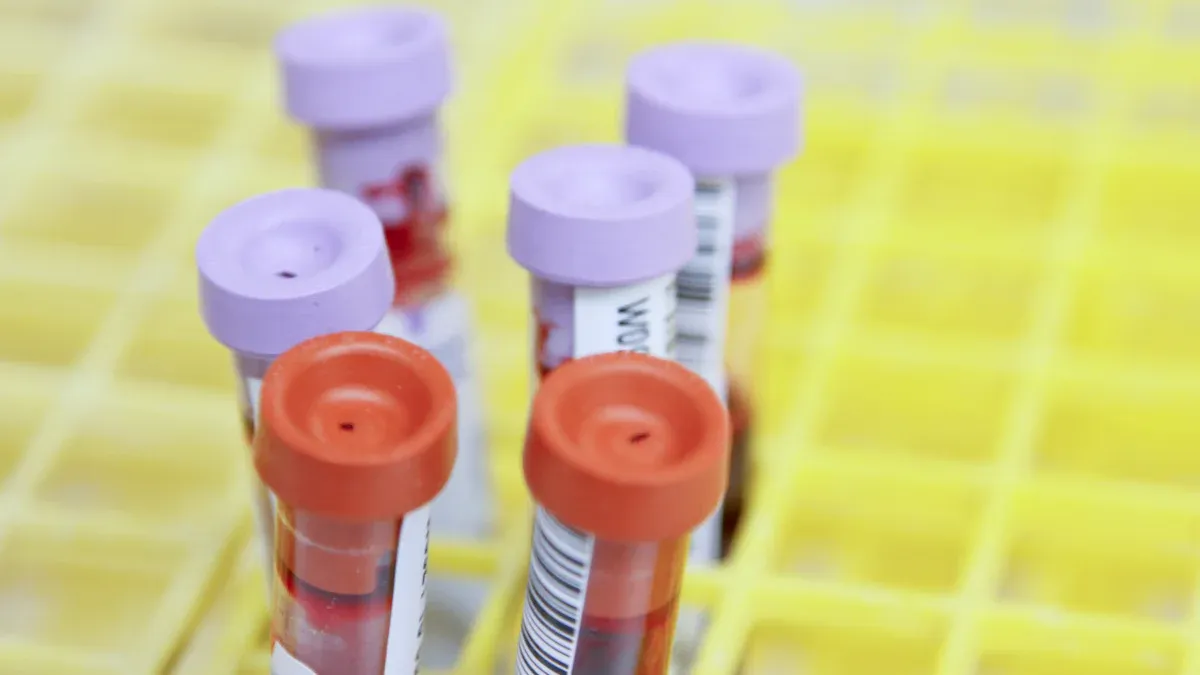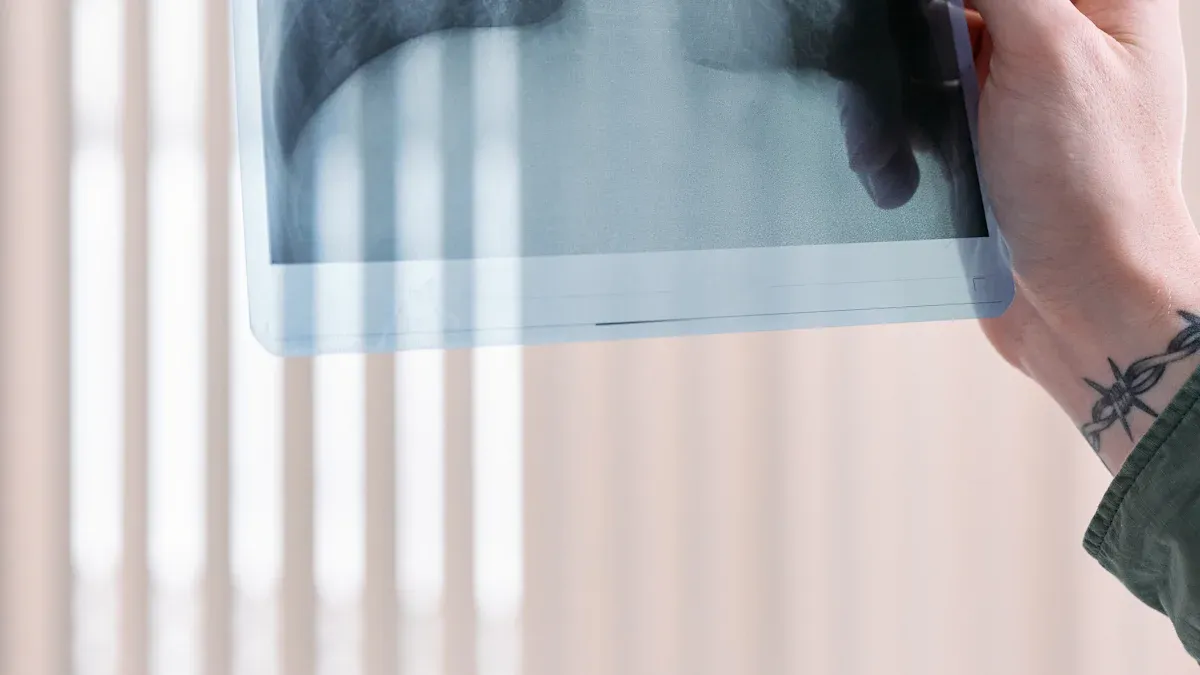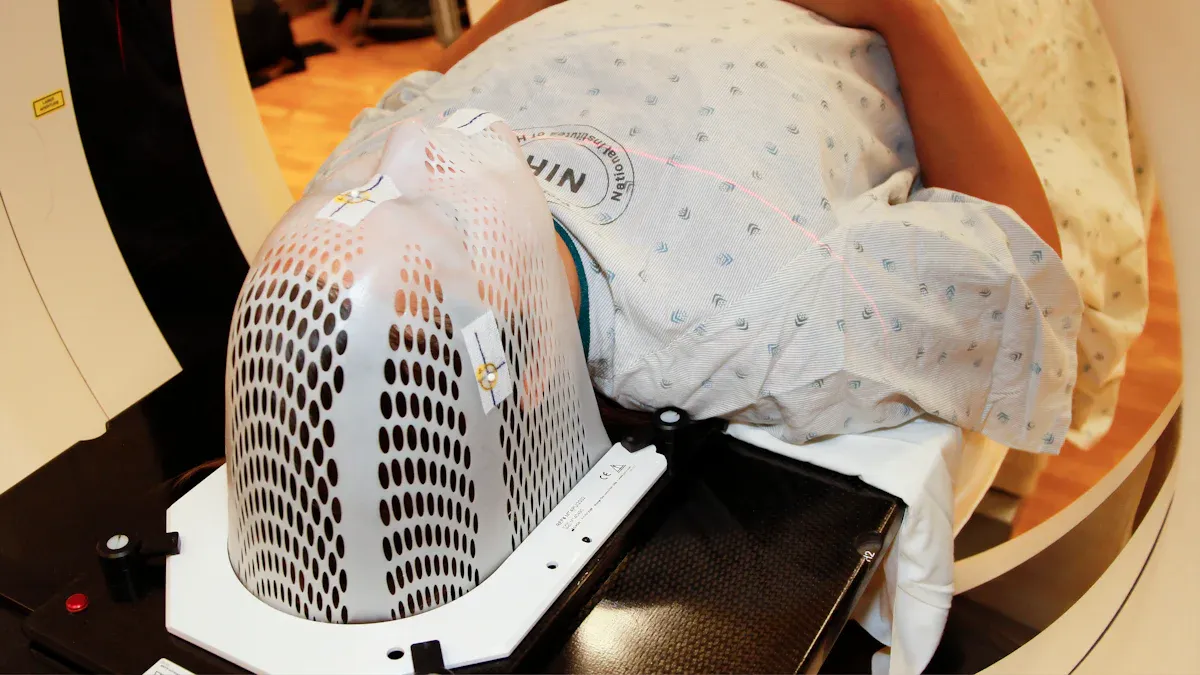Why Imaging and Biopsies Are Key to Accurate Cancer Diagnosis

Accurate cancer diagnosis relies on imaging and biopsies. These tools help you detect cancer early, confirm its presence, and understand its nature. Routine imaging, like mammograms or low-dose CT scans, often identifies cancers before symptoms appear, giving you more treatment options and better survival chances. Biopsies, such as needle or surgical methods, provide definitive results, with detection rates ranging from 60% to 98%. Together, these techniques reduce the need for invasive procedures and improve outcomes. While blood tests offer some insights, they cannot replace the precision of imaging and biopsies in answering questions like, "Can Cancer Always Be Detected with a Blood Test? Why Imaging and Biopsies Matter."
Key Takeaways
Scans like CT and MRI find cancer early. This helps doctors treat it better and saves lives.
Biopsies check tissue to confirm if it is cancer or not.
Using both scans and biopsies makes diagnosis more accurate. It lowers mistakes and avoids unneeded treatments.
Regular scans after treatment show how tumors respond. This helps doctors change treatments if needed.
Blood tests have limits, so scans and biopsies are important for finding cancer correctly.
The Role of Imaging in Cancer Diagnosis

Detecting Tumors and Abnormalities
Identifying suspicious growths and changes in tissues.
Imaging plays a vital role in spotting unusual growths or changes in your body’s tissues. Techniques like X-rays, MRIs, and CT scans allow doctors to see inside your body without surgery. These tools help identify areas that may require further investigation, such as lumps or masses that could indicate cancer. By catching these changes early, imaging provides a critical first step in the diagnostic process.
Locating tumors deep within the body for further evaluation.
Some tumors develop in areas that are hard to reach or see, like the lungs or brain. Advanced imaging techniques, such as PET scans or ultrasound, help locate these hidden tumors. This allows doctors to focus on specific areas for further testing, like biopsies, ensuring no potential cancer goes unnoticed.
Guiding Biopsies with Precision
Using imaging to pinpoint areas for tissue sampling.
Imaging doesn’t just detect abnormalities; it also guides biopsies. For example, ultrasound or CT scans can help doctors target the exact spot to collect tissue samples. This precision reduces the chance of missing the affected area and increases the likelihood of an accurate diagnosis.
Enhancing accuracy and reducing invasiveness.
By using imaging to guide biopsies, doctors can minimize the need for invasive procedures. Instead of exploring large areas, they can focus on specific spots. This approach not only improves accuracy but also makes the process less stressful for you.
Early Detection and Staging
Catching cancer early for better treatment outcomes.
Early detection is one of the most significant benefits of imaging. When cancer is found early, treatment options are more effective, and survival rates improve. Routine imaging, like mammograms or low-dose CT scans, has been shown to catch cancers before symptoms appear, giving you a better chance at recovery.
Determining the stage and spread of cancer.
Imaging also helps determine how far cancer has spread, known as staging. This information is crucial for planning treatment. For example, a CT scan can show whether cancer has moved to nearby lymph nodes or other organs. Knowing the stage helps doctors create a personalized treatment plan tailored to your needs.
Advanced imaging techniques remain underutilized in some areas, but studies show that investing in these tools can significantly improve cancer management. Imaging not only aids in early diagnosis but also helps monitor treatment effectiveness, making it an indispensable part of cancer care.
By combining imaging with other diagnostic tools, like biopsies, you get a more accurate picture of your health. While blood tests provide some information, they cannot replace the detailed insights offered by imaging and biopsies. This is why the question "Can Cancer Always Be Detected with a Blood Test? Why Imaging and Biopsies Matter" highlights the importance of these tools in ensuring accurate diagnoses and effective treatments.
The Importance of Biopsies in Confirming Cancer

Providing a Definitive Diagnosis
Examining tissue samples to confirm cancer presence.
Biopsies provide the most reliable way to confirm if cancer is present. By examining tissue samples under a microscope, pathologists can identify cancerous cells with high accuracy. Different biopsy methods, such as core needle biopsy (CNB) and incisional biopsy (IB), offer impressive diagnostic rates:
CNB achieves a 96% accuracy rate for detecting malignancy.
IB reaches a 100% accuracy rate for confirming cancer.
These methods ensure that you receive a definitive diagnosis, reducing uncertainty and guiding the next steps in your care.
Differentiating between benign and malignant growths.
Not all abnormal growths are cancerous. Biopsies help distinguish between benign (non-cancerous) and malignant (cancerous) tissues. This distinction is crucial because benign growths often require less aggressive treatment or monitoring, while malignant ones demand immediate attention. By providing this clarity, biopsies prevent unnecessary treatments and focus on what truly matters.
Identifying Cancer Type and Aggressiveness
Determining the specific type of cancer.
Biopsies reveal more than just the presence of cancer. They identify the specific type of cancer cells, such as carcinoma, sarcoma, or lymphoma. This information is essential for creating an effective treatment plan.
Biopsies provide much more information than just the presence or lack of cancerous cells. Your cancer care team uses them to determine other specifics about the cancer, if detected, such as the specific subtype of cancer cell present — all of which is essential information to charting a successful treatment plan.
Assessing the grade and aggressiveness of the disease.
Biopsies also help assess how aggressive the cancer is. Pathologists examine the grade of the tumor, which indicates how quickly the cancer cells are likely to grow and spread. For example, grading accuracy for CNB specimens is 87%, while IB specimens achieve 84%. This insight helps your doctor predict the cancer’s behavior and choose the best course of action.
Informing Personalized Treatment
Analyzing genetic and molecular characteristics.
Biopsies go beyond identifying cancer type and grade. They analyze the genetic and molecular makeup of the tumor. This analysis uncovers specific mutations or biomarkers that can guide targeted therapies.
The identification of an oncogene, or other specific products required by the tumor cells for sustained growth followed by administration of a specific inhibitor to the target, are the basis of personalized cancer treatment. Frequently, multiple different signaling pathways are involved in disease growth and progression. The pathways involved can change over the course of the disease creating mutational heterogeneity and result in significant challenges for therapy.
Guiding decisions on targeted therapies.
Personalized treatment strategies rely on biopsy results. For instance, variations in gene expression and prognostic signatures within the same tumor can influence therapy choices. Studies show that breast cancer biomarkers can vary by 32.4% between primary and metastatic tissue biopsies. This variability highlights the importance of biopsies in tailoring treatments to your unique cancer profile.
Biopsies, combined with imaging, provide a comprehensive understanding of your condition. While blood tests offer some insights, they cannot replace the detailed information biopsies provide. This is why the question "Can Cancer Always Be Detected with a Blood Test? Why Imaging and Biopsies Matter" underscores the critical role of biopsies in accurate diagnosis and effective treatment.
How Imaging and Biopsies Work Together
Comprehensive Diagnosis
Combining imaging and biopsy results for accuracy.
Imaging and biopsies complement each other to provide a complete picture of your condition. Imaging techniques, such as MRI or CT scans, detect abnormalities and guide biopsies to the right location. Biopsies then confirm whether the detected tissue is cancerous. Together, these tools improve diagnostic accuracy and reduce the chances of missing critical information.
Routine Screening: Imaging can detect cancer early, even before symptoms appear.
Spotting Abnormalities: Advanced imaging identifies small tumors or tissue changes that might otherwise go unnoticed.
Biopsy Guidance: Imaging ensures precise targeting for biopsies, improving accuracy and reducing risks.
Reducing the risk of misdiagnosis.
Combining imaging and biopsy results minimizes the risk of misdiagnosis. For example, the PROMIS study demonstrated that using multi-parametric MRI (MP-MRI) alongside traditional biopsy methods increased sensitivity to 93% while reducing unnecessary biopsies by 27%. This approach ensures you receive the right diagnosis and avoid unnecessary procedures.
Treatment Planning and Monitoring
Mapping surgical or radiation approaches with imaging.
Imaging plays a crucial role in planning your treatment. It helps doctors map out surgical or radiation strategies by showing the exact size, location, and spread of the tumor. For instance, imaging can non-invasively sample both primary and metastatic tumors, providing essential data for treatment decisions. This precision ensures that interventions target the cancer effectively while sparing healthy tissue.
Using biopsy results to tailor treatment plans.
Biopsies provide detailed information about the tumor’s genetic and molecular characteristics. This data helps doctors choose therapies that are most likely to work for you. Imaging complements this by offering a visual guide for treatment delivery. Together, these tools create a personalized treatment plan that addresses your unique needs.
Tracking Progress and Effectiveness
Monitoring tumor changes with imaging.
Imaging allows doctors to track how your tumor responds to treatment. By measuring changes in tumor size or appearance, they can determine whether the therapy is working. Regular imaging scans also help detect early signs of cancer recurrence, enabling timely intervention.
Conducting follow-up biopsies to evaluate treatment success.
Follow-up biopsies provide additional insights into how well your treatment is working. They confirm whether cancer cells remain or if the tumor has changed in any way. Combining this information with imaging results ensures a thorough evaluation of your progress.
Imaging and biopsies together offer a powerful way to monitor your condition. While blood tests provide some insights, they cannot replace the detailed information these tools deliver. This is why the question "Can Cancer Always Be Detected with a Blood Test? Why Imaging and Biopsies Matter" highlights their importance in accurate diagnosis and effective treatment.
Can Cancer Always Be Detected with a Blood Test? Why Imaging and Biopsies Matter
Limitations of Blood Tests
Blood tests cannot always detect cancer or provide detailed information.
Blood tests offer valuable insights, but they cannot always detect cancer or provide the detailed information needed for a diagnosis. For example, a study found that while blood tests identified 26 cancers among 10,000 participants, they also produced false positives. These false results suggested cancer in individuals who did not have it, leading to unnecessary stress and treatments. Additionally, blood tests may detect very early-stage cancers that might never affect your life, resulting in overdiagnosis. These limitations highlight why blood tests alone are not enough for accurate cancer detection.
Imaging and biopsies are necessary for a definitive diagnosis.
To confirm cancer, you need tools that go beyond blood tests. Imaging techniques, such as MRIs or CT scans, locate abnormalities and guide biopsies to the right spot. Biopsies then provide a definitive diagnosis by examining tissue samples. Together, these methods ensure accuracy and reduce the risk of misdiagnosis. Blood tests can support the process, but imaging and biopsies remain essential for understanding the full picture of your health.
Enhancing Diagnostic Accuracy
Imaging locates abnormalities, while biopsies confirm cancer.
Imaging and biopsies work together to enhance diagnostic accuracy. Imaging detects abnormalities, such as small tumors or structural changes, even before symptoms appear. This early detection allows for timely intervention. Once imaging identifies a suspicious area, a biopsy confirms whether the tissue is cancerous. This combination ensures you receive the most accurate diagnosis possible.
Routine Screening: Imaging detects cancer early, improving treatment outcomes.
Spotting Abnormalities: Advanced imaging finds small tumors that might otherwise go unnoticed.
Biopsy Guidance: Imaging ensures precise tissue sampling, reducing risks and improving accuracy.
Both tools provide critical insights for effective treatment.
Imaging and biopsies not only diagnose cancer but also guide treatment. Imaging shows the size and location of tumors, helping doctors plan surgeries or radiation therapy. Biopsies reveal the genetic and molecular characteristics of the cancer, enabling personalized treatment strategies. Together, these tools provide the critical insights needed to create an effective treatment plan tailored to your unique condition.
While blood tests play a role in cancer detection, they cannot replace the precision and depth of imaging and biopsies. This is why the question "Can Cancer Always Be Detected with a Blood Test? Why Imaging and Biopsies Matter" emphasizes the importance of these tools in ensuring accurate diagnoses and effective treatments.
Imaging and biopsies are essential tools for accurate cancer diagnosis. They work together to detect cancer early, confirm its presence, and guide personalized treatment plans. Imaging provides a clear view of abnormalities, while biopsies deliver definitive answers about the nature of the disease.
Key Benefits of Imaging and Biopsies:
Imaging ensures precise biopsy guidance, reducing harm to healthy tissues.
Biopsies confirm cancer type and aggressiveness, enabling tailored therapies.
Post-treatment imaging tracks tumor response, allowing timely adjustments.
Evidence Type | Description |
|---|---|
Diagnosis | Imaging improves cancer detection and staging, leading to better treatment planning. |
Treatment Monitoring | Regular imaging tracks treatment response, ensuring effective adjustments. |
Investment Returns | Increased imaging investment enhances cancer management more than treatment investment alone. |
These tools not only improve patient outcomes but also provide clarity during a challenging time. By combining their strengths, you gain the best chance for early detection, precise diagnosis, and effective treatment.
FAQ
What is the difference between imaging and biopsies?
Imaging shows pictures of the inside of your body, helping doctors find abnormalities like tumors. Biopsies involve taking a small tissue sample to confirm if cancer is present. Imaging detects, while biopsies confirm.
Are imaging tests painful?
Most imaging tests, like X-rays or MRIs, are painless. Some, like CT scans with contrast dye, may cause mild discomfort. Your doctor will explain what to expect during the procedure.
How long does it take to get biopsy results?
Biopsy results usually take a few days to a week. Pathologists carefully examine the tissue to ensure accurate findings. Your doctor will share the results as soon as they are ready.
Can imaging or biopsies detect all types of cancer?
Imaging and biopsies detect most cancers, but some rare types may require additional tests. Combining these tools with other methods improves accuracy and ensures a thorough diagnosis.
Why can’t blood tests replace imaging and biopsies?
Blood tests provide limited information. They cannot show tumor location or confirm cancer type. Imaging and biopsies give detailed insights, helping doctors plan effective treatments tailored to your needs.
Tip: Always ask your doctor about the best diagnostic tools for your situation. Each case is unique, and combining methods ensures the most accurate results.
See Also
Key Features and Insights Into Cholangiocarcinoma
Recognizing Symptoms and Treatment Options for Duodenal Cancer
An In-Depth Overview of Various Cancer Types
